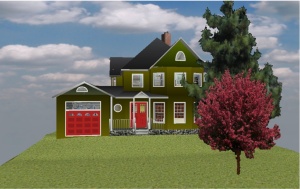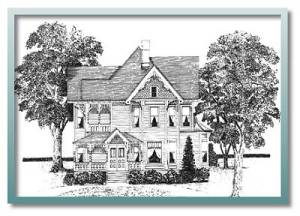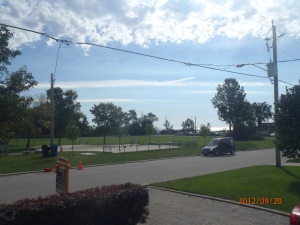Surprisingly, the more I learned about designing a house, the more I realized that many of the decisions are already made for you. This is because of layout, practicality in design and the fact there are many stock and standard sizes to items. Of course you can design your house outside of standard sizes but this just increases the cost to the house considerably. Some of the design features that influenced the design of the house include:
1. the location and size of the garage decides much of the frontage/ street appeal of the house. Like I’ve stated before, in our case a tree that could not be removed obstructed one side and the curb cut was on the other side determining the location of the garage from the start.
2. The size of the garage is a minimum 12′ for a single garage and 20′ for a double.
3. you should look at published and manufacturers tables to know this for sure but basically maximum floor joists spans between either bearing walls (ie exterior) or beams is about 18′ for solid wood and 22′ for manufactured. That means in a house that is either 30′ wide or 30′ deep there will be at least one bearing wall down the middle. Location of posts for beams and size of beams and footings also follow rules but are basically designed and stamped by the engineer.
4. interior doors are generally 2’6″ (30″) wide and 80″ tall. Doors can come in other sizes but this I believe is the most common size.
5. kitchen cabinets generally come in multiples of 3″ ie 15-18-21-24″ wide. Bottom cabinets are always 24″ and top cabinets can be either 12″ or 18″ (more expensive but better) deep. The bottom cabinets always end at 34 1/2″ high and the top cabinets start at 54″ and up. The upper cabinets can extend as close to the ceiling as you like as they have different sizes available.
6. walkways and staircases that allow people to move through the house should be at least 3′ wide and preferably 4′ or more.
7. rooms and sitting areas should be laid out in a 12×12′ pattern.
8. the kitchen lay out is determined by a triangular arrangement of the sink, stove and refrigerator where the sum of the sides of the triangle is at most 26′ to minimize walking between appliances while cooking
9. the kitchen counter top should be a minimum of 20′ length
10. the dishwasher must always be close to a sink for drainage
11. the furnace should be centrally located to maximize the efficiency of the vent ducts and minimize distance of runs
12. the height and width or each step in a staircase must fit according to rules to be comfortable to use ( your designer or computer program can decided this but there are graphs and tables for this as well)
13. There are many codes that determine other factors in the house ie % window area in basement to allow fire egress, % window area in each wall, % window area in walls adjacent to other houses, limiting distance between wall and property line to allow for fire code, minimum height of ceiling above a staircase et et.
14. A lot of attention should be placed on space around objects allow for first minimum space required to move and for appropriate proportions. For example, there is a minimum space in front of a dishwasher, oven and fridge to allow for the door to open and still stand in front of the appliance (I would think at least 30″ but likely more is required). There is a minimum space around a fireplace hearth (check ASTM requirements but I think it is 1′ on each side and 4′ in front non combustible material). There is a minimum space to allow doors to open and close and in front of toilets, counter tops et et. In addition to these minimum space requirements, space should be proportionate to the size of the hall and room. There are a lot of space requirements already established by the National Kitchen and Bath Association (NKBA) or American Disability Act Accessibility Guidelines for Building Homes (ADA).
For all these reasons and many more, much of the design of the house is actually already determined before you even begin and it is really a lot about reading the rules that govern how a house is built. In general, I think for many of the people out there, a good designer/ architect will help you through this process.













